27 November
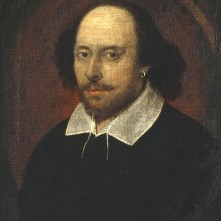
William Shakespeare
1531 (some say 4th December) – Burning of Richard Bayfield, Benedictine monk and reformist, at Smithfield for heresy. Sir Thomas More caught Bayfield importing Lutheran books into England, and he was tried by John Stokesley, Bishop of London, at St Paul's on 10th November 1531, and convicted.
1544 – Death of Sir Edward Baynton, soldier, courtier and Vice-Chamberlain to five of Henry VIII's wives, in France. His cause of death is unknown, but he may have been wounded while serving as a soldier in France. Baynton had arranged to be buried at Bromham, but it appears that he was buried in France.
1556 – Death of Henry Parker, 10th Baron Morley, nobleman, diplomat, translator and father of Jane Boleyn (wife of George Boleyn), at his home, Hallingbury Place, Great Hallingbury, Essex. He was in his late seventies at the time of his death. He was buried at St Giles's Church, Great Hallingbury. Click here to read more about this interesting Tudor man.
1556 (27th or 28th November) – Death of Sir Nicholas Poyntz, soldier, courtier and landowner. Poyntz was a reformer and was visited at his home at Iron Acton, in Gloucestershire, in 1535 by King Henry VIII and Anne Boleyn. He actually built a whole new wing to impress the royal couple.
1575 – Death of Sir Peter Carew, soldier, adventurer and conspirator, at Ross in County Waterford, Ireland. He was buried at Waterford Church, beside the altar. Carew had gone to Ireland in 1568 to lay claim to lands there, and this had put him at loggerheads with the powerful Butler family. Carew had been involved in plotting with the leaders of Wyatt's Rebellion, but had deserted and fled to France in disguise when Mary I's Privy Council got wind of the rebellion.
1582 - The eighteen-year-old William Shakespeare married the twenty-six-year-old Anne (also known as Agnes) Hathaway, who was pregnant at the time of the ceremony at Temple Grafton near Stratford-upon-Avon in Warwickshire.
28 November
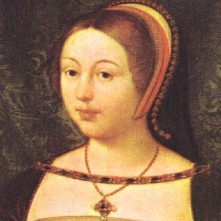
Margaret Tudor
1489 – Birth of Margaret Tudor, Queen of Scotland and consort of James IV, at Westminster Palace. Margaret was the eldest daughter of Henry VII and his wife, Elizabeth of York, and the sister of Henry VII. She spent her childhood at Sheen and at Eltham Palace, but was sent to Scotland at the age of thirteen to marry James IV.
1499 – Execution of Edward Plantagenet, styled Earl of Warwick, on Tower Hill. Edward was the son of George, Duke of Clarence, brother of Edward IV and Richard III, and so was a potential claimant to the throne. He was imprisoned in the Tower of London after Henry VII's accession, and was executed for treason after the pretender Perkin Warbeck had allegedly plotted to free himself and Edward. He was buried at Bisham Abbey.
1557 – Death of Sir Robert Rochester, administrator. He was buried at the Charterhouse at Sheen. Rochester served Mary I as Comptroller of the Royal Household, Privy Councillor, Chancellor of the Duchy of Lancaster, Keeper of the Privy Seal and a member of Parliament.
1565 – Francis Yaxley, member of Parliament and political agent, set sail from Antwerp, and drowned when his ship foundered off the coast of Northumberland. Yaxley worked for Mary, Queen of Scots, was Secretary to her husband, Lord Darnley, and acted as Mary's envoy to the Spanish court. He was returning to Scotland from a mission to ask Philip of Spain to intercede with Elizabeth I to secure the release of Darnley's mother and to stop helping Mary's enemies, when he died. Although Philip declined to talk to Elizabeth on Mary's behalf, he did give Yaxley 20,000 crowns to give Mary. This gold, and Yaxley's body, were seized by the English when they washed up on Holy Island.
1584 – Sir Christopher Hatton, as government spokesman, spoke to Parliament on the dangers of Spain, in a speech lasting 'above two hours'.
1609 – Death of Sir Thomas Smith, Chief Secretary to Robert Devereux, 2nd Earl of Essex, at his home at Parson's Green in Fulham, London. He was buried at Fulham Church.
29 November
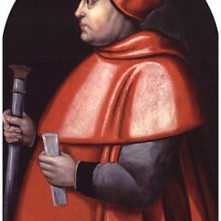
Cardinal Thomas Wolsey
1528 – Birth of Anthony Browne, 1st Viscount Montagu, nobleman and courtier. Montagu was the eldest son of Sir Anthony Browne of Cowdray Park, Sussex, and his first wife, Alice, daughter of Sir John Gage. Montagu's offices in Mary I's reign included Master of the Horse to Philip of Spain, Lord Lieutenant of Sussex and Privy Councillor.
1530 - Cardinal Thomas Wolsey died at Leicester Abbey. He had left his home of Cawood Castle on the 6th November after the Earl of Northumberland, and William Walsh had taken him into custody on the 4th November for high treason. He died at around 8am, and his body was laid out in his pontifical robes for people to see before he was buried at the Abbey, where he still rests today.
1593 – Execution of Richard Hesketh, merchant, at St Albans for treason. Hesketh had incited Ferdinando Stanley, the new 5th Earl of Derby, to lead a rebellion to claim the throne by right of his descent from Mary Tudor, sister of Henry VIII.
30 November
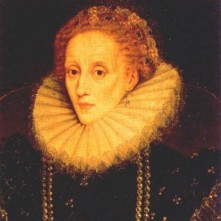
Elizabeth I
1529 - Catherine of Aragon confronted her husband, Henry VIII, about his treatment of her. Click here to find out more about this.
1554 – Both Houses of Parliament presented a petition to Mary I and her husband Philip to intercede with Cardinal Reginald Pole, the papal legate, for absolution for the years of separation from Rome and for reconciliation with Rome. Pole then absolved England and restored it to the Catholic fold.
1554 – Birth of Philip Sidney, the poet, courtier and soldier, at Penshurst Place in Kent. Sidney is known for his famous work “Astrophel and Stella”.
1558 – Death of Elizabeth Howard (née Stafford), Duchess of Norfolk, eldest daughter of Edward Stafford, 3rd Duke of Buckingham, and wife of Thomas Howard, 3rd Duke of Norfolk. Her marriage to Norfolk broke down after he took Elizabeth (Bess) Holland as a mistress in 1527. She gave evidence against her husband when he was accused of treason in 1546, and she bore Mary I's train at her coronation in 1553. Elizabeth was buried in the Howard Chapel at St Mary's Church, Lambeth, now a garden museum.
1577 – Execution of Cuthbert Mayne, Roman Catholic priest, at Launceston in Cornwall after refusing to accept Elizabeth I as supreme head of the church in England. He was hanged, drawn and quartered, and his head was put on display on the gate of Launceston Castle and his quarters sent to Bodmin, Barnstaple, Tregony and Wadebridge as a warning to others.
1601 – Elizabeth delivered her famous Golden Speech to the House of Commons, to address their concerns over England’s economic state of affairs. Click here to read the speech.
1 December
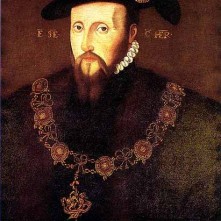
Edward Seymour
1521 - Death of Pope Leo X, or Giovanni di Lorenzo de' Medici, from malaria.
1530 – Death of Margaret of Austria at Mechelen. She was buried alongside her second husband, Philibert II, Duke of Savoy, in their mausoleum at Bourg-en-Bresse.
1539 – Execution of Thomas Marshall, Abbot of Colchester, at Colchester. Marshall was hanged, drawn and quartered for treason for his opposition to the dissolution of the monasteries, his refusal to accept Henry VIII as the Supreme Head of the Church in England and his belief that those carrying out the King's wishes regarding religion and the monasteries were heretics.
1541 - Thomas Culpepper and Francis Dereham convicted of treason. Culpeper and Dereham were arraigned at Guildhall for treason and sentenced to a traitor's death.
1551 - Trial of Edward Seymour, Duke of Somerset, at Westminster for treason – He was tried by his peers at a trial presided over by William Paulet, Marquess of Winchester, and was acquitted of treason, after he skilfully defended himself, but was found guilty of felony because he incited men to riot. Somerset was executed on 22nd January 1552 on Tower Hill.
1581 - Roman Catholic priests Alexander Briant, Ralph Sherwin and Edmund Campion were hanged, drawn and quartered at Tyburn for allegedly plotting against Queen Elizabeth I. All three men were canonised in 1970 by Pope Paul VI.
2 December
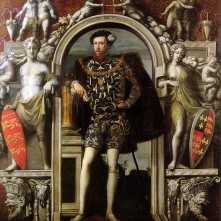
Henry Howard
1546 - Henry Howard, Earl of Surrey, eldest son of Thomas Howard, 3rd Duke of Norfolk, and the renowned Tudor poet, was arrested and charged with improper heraldry after using the arms of his ancestor Edward the Confessor, something which only the King was entitled to do.
1560 – Death of Charles de Marillac, French diplomat and Archbishop of Vienne, at Melun in France. Marillac was a resident ambassador at the court of Henry VIII from 1538 to 1543 and described Henry VIII as having three vices, which he described as “plagues”: “the first is that he is so covetous that all the riches of the world would not satisfy him. Thence proceeds the second, distrust and fear. This King, knowing how many changes he has made, and what tragedies and scandals he has created, would fain keep in favour with everybody, but does not trust a single man, expecting to see them all offended, and he will not cease to dip his hand in blood as long as he doubts his people. The third vice lightness and inconstancy.”
Marillac was banished from the French court in 1560 after opposing the policies put forward by the Guises at the Assembly of Notables at Fontainebleau.
1586 – Parliament met on the 2nd December following their request for Elizabeth I to sanction the execution of Mary, Queen of Scots, and the commissioners' meeting in the Star Chamber where they condemned her to death. A draft proclamation of sentence, written by Elizabeth and William Cecil, Lord Burghley, was published at the Parliament, and this was followed by the drafting of an execution warrant by Sir Francis Walsingham.
1615 – Burial of Edward Wright, mathematician and cartographer, at St Dionis Backchurch, London. He died in late November 1615, while working on his book “A Description of the Admirable Table of Logarithmes”. Wright is known for his work on the mathematics of navigation and his 1599 treatise “Certaine Errors of Navigation”, which explained and developed the Mercator projection.
3 December
1536 - A proclamation was made to the rebels of the Pilgrimage of Grace offering them a pardon. The rebellion dispersed, but was followed by another rebellion, Bigod's Rebellion, in early 1537. Click here to read more.
1577 – Death or burial of William Downham, Bishop of Chester and former
Chaplain of Elizabeth I before her accession. He was buried in the choir of Chester Cathedral.
1600 – Death of Roger North, 2nd Baron North, peer and politician in Elizabeth I's reign, at his London home in Charterhouse Square. He was given a funeral service at St Paul's, followed by a burial at Kirtling in Cambridgeshire. North was a friend of Robert Dudley, Earl of Leicester, and served Elizabeth I as Privy Councillor and Treasurer of the Household.

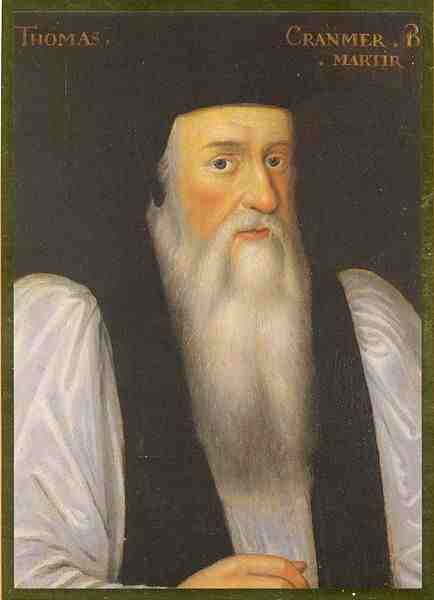
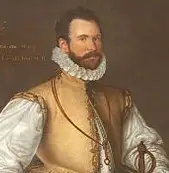
Leave a Reply